As a parent, you’re probably aware of handwriting development’s significance in children’s academic journey. It’s more than just forming letters and words; it’s about fine-tuning motor skills, improving visual perception, and ensuring legibility. But are you fully equipped to guide your children through the development process?
With the right strategies, you can effectively facilitate their progression from random scribbles to coherent handwriting.
Why is Handwriting Important?
While you may not realize it, handwriting is an essential life skill that plays a significant role in your child’s education and daily life. The benefits of handwriting extend beyond just putting pen to paper. It’s an important part of your child’s cognitive development, helping to enhance their reading, spelling skills and memory recall.
When your child has difficulty with handwriting, it can hinder their academic progress. Struggling to form letters correctly can take away from their ability to express thoughts and ideas effectively. This is where handwriting strategies come into play. These strategies, such as practicing letter formation or adjusting grip, can help your child overcome these difficulties and improve their handwriting skills.
Even with today’s technology, the impact of proper handwriting can’t be ignored. While technology offers alternative ways to communicate, it doesn’t replace the need for handwriting. Tasks like filling forms, writing cards, taking notes, or signing important documents still require good handwriting skills. Additionally, research suggests that handwriting aids learning and memory more than typing. So, while technology has its place, it’s important not to let it overshadow the importance of handwriting.
Handwriting Development
In the journey of mastering handwriting, your child will gradually progress from basic scribbling to the formation of letters, words, and eventually sentences. This development is marked by key handwriting milestones. The first is often scribbling, followed by drawing shapes, and then letter formation.
However, handwriting development doesn’t always come easily and your child may face some handwriting challenges. These can include difficulty in coordinating fine motor skills, trouble with memory, and struggles with concentration. It’s important to remember that it’s okay if they choose to write with their left hand. There’s no need for them to swap hands.
Handwriting tools such as pencils, pens, and crayons, along with paper, can provide your child with the opportunity to practice and develop their handwriting skills. Handwriting exercises, like tracing shapes, letters, and words, can further enhance their skills.
Tracking your child’s handwriting progress is important in understanding their development. This can be as simple as noting the evolution of their scribbles into coherent letters and words. Remember, every child develops at their own pace, so patience and encouragement go a long way in supporting your child’s handwriting development.
The Components of Handwriting
Handwriting development is a complex process involving motor skills, fine motor skills, visual perception, legibility, and sensory components.
Each of these elements plays an important role in a child’s handwriting development, and a deficiency in any one area could lead to difficulties in the overall handwriting process.
Motor Skills
You’ll find that motor skills greatly impact your child’s handwriting development, as they encompass the physical movements of the hand, arm, and fingers used to form letters and words. These skills include hand strength, finger control, range of motion, pencil control, and hand-eye coordination.
Hand strength is crucial for controlling the pencil and applying the right amount of pressure. Too little strength can result in faint, unclear letters, while too much can lead to overly dark, potentially messy writing. Finger control, closely linked to hand strength, allows for the intricate movements required to form letters and words correctly.
The range of motion in the hand and arm is equally important, ensuring fluidity and ease in writing movements. Limited motion can hinder the ability to write quickly and smoothly. Pencil control is another critical factor; it’s the ability to manipulate the pencil accurately to create legible handwriting. Pencil control involves holding the pencil in the correct area and using the proper fingers for control.
Lastly, hand-eye coordination plays an essential role in handwriting development. It enables the child to see what they’re writing and adjust their movements accordingly for clarity and precision. Together, these motor skills contribute significantly to the development of competent, comfortable handwriting in children.
Fine Motor Skills
Building on the fundamental motor skills that form the groundwork for handwriting, it’s worth examining the fine motor skills that specifically hone a child’s handwriting capabilities. Handwriting exercises and fine motor activities can greatly help improve the handwriting development of your child.
In-hand manipulation and a firm handwriting grip, for example, can be developed through activities that involve picking up small objects like beads or buttons with tweezers. This strengthens the pincer grasp, essential for holding handwriting tools correctly. Encourage your child to participate in these exercises regularly for better handwriting practice.
Finger isolation, thumb opposition, and opening the thumb web space are also important for a child’s handwriting development. Activities that involve separating the sides of the hand, such as playing a piano or using a spray bottle, can improve these skills.
Moreover, handwriting tools like pencil grips can aid in maintaining the tripod grasp and wrist extension, improving your child’s control and precision during handwriting practice.
Visual Perception
It’s important that you understand the interconnected visual, motor, and cognitive processes that underpin your child’s ability to comprehend and interpret written text.
Visual processing helps your child recognize different forms of a letter, allowing for accurate letter recognition. It’s about more than just seeing; it’s about understanding what’s seen. For instance, distinguishing between upper and lower case letters involves visual processing.
Hand-eye coordination is integral to this process. It enables your child to make the connection between what they see (a letter or word) and their motor response (writing it). This coordination is facilitated by visual-motor integration, marrying visual perception and motor control.
Spatial awareness, another important component, impacts how well your child places letters on the page. Poor spatial awareness can lead to unevenly spaced letters, which can impact legibility.
Legibility
Now that we’ve examined the impact of visual perception on handwriting development, let’s consider legibility, a fundamental component of handwriting. It’s the ease with which written work can be read and understood by others. Multiple factors influence legibility, such as ink selection, paper choices, pen grip, writing speed, letter spacing, and letter formation.
Ink selection can affect the clarity of a child’s handwriting. Darker inks usually provide better contrast against the paper, making the writing more legible. Paper choices also play a role. Lined paper can guide children to write straight and evenly spaced letters, contributing to legibility. This is why letter tracing books have guidelines to make it easier for children to learn how to write straight across the page.
The pen and pencil grip is another critical factor. An effective grip isn’t too tight or too loose, but just right to control the pen’s movements smoothly. This control enhances the precision of letter formation, which is central to legibility. Each letter must be formed accurately, with clear distinctions between similar-looking letters. Holding a pencil too tightly may lead to discomfort and cramping of the hand muscles. A pencil held too loosely may result in messy lettering and light writing, which may make it hard to read.
Writing speed also impacts legibility. If your child writes too fast, the handwriting may become sloppy and difficult to read. Encourage a moderate speed that allows for accurate and neat letter formation. There is, however, a speed which can be considered too slow. If your child is school-aged, they need to be prepared to write at a decent cadence to keep up with the information being presented to them by their teacher. If your child writes too slowly to draw out each letter, they may miss important information due to taking too long to write things down.
Sensory Components
Have you ever considered the sensory components involved in handwriting, such as pencil pressure, body awareness, position in space, self-regulation, and sensory needs? Sensory integration is important to handwriting development, as it helps children coordinate their senses with their motor skills. This includes the ability to hold and control a pencil, which requires fine motor skills and an effective pencil grip.
Body awareness plays an important role in determining how a child holds the pencil, and proprioception, a child’s awareness of their position in space, is key to handwriting development. This involves understanding the relationship between their hand movements and the marks made on the paper.
Self-regulation is another critical element, as it allows children to control their fine motor skills. It helps them adjust the pressure they apply with the pencil, ensuring their handwriting isn’t too light or too heavy.
Lastly, a child’s sensory needs must be considered when developing handwriting techniques. Some children may require a softer or harder pencil, or different types of paper, to feel comfortable when writing. Understanding these sensory components can greatly enhance a child’s handwriting development and overall writing experience.
I hope you now realize that there are many components that need to work together to develop a child’s handwriting skills. Handwriting may seem like a simple task for adults, but there are many physical and mental factors that need to coordinate for proper handwriting. It is important that you consider this as you work on your child’s handwriting development.
Early Handwriting Skills: Toddlers
In your toddler’s development, around the age of two, drawing becomes the initial step towards handwriting, starting with simple scribbles on paper and gradually evolving into controlled lines and curves. This phase, full of scribbling activities, is incredibly important for their handwriting development. As they continue to practice, you’ll notice their drawing development greatly improves.
To aid in this development, it’s important to enhance their hand muscle strength and teach finger grip techniques. To do this, provide small chunks of crayons or chalk as these encourage a fingertip grip, subsequently helping them learn to hold a pencil. Additionally, props such as easels or blackboards can help your toddler make downward strokes, a critical skill for later writing stages.
Another effective strategy is to engage them in activities that strengthen hand muscles, like squeezing and pinching playdough or threading big beads. Also, make sure you expose your child to various materials to scribble on, like colored paper or cardboard.
Developing Handwriting Techniques: Preschoolers
As your little one grows and enters the preschool years, their scribbles start to take on more defined shapes, which can indicate that they are ready for more advanced handwriting techniques. Line tracing is a fundamental skill to develop at this stage. Encourage your child to follow straight or curved lines drawn on a page. You can make this activity more engaging by creating a storyline. You can consider purchasing tracing books and coloring books to help your child control the crayon or colored pencil.
Drawing simple shapes requires a higher level of control. Encourage them to draw circles, squares, and triangles. As they gain more control, introduce stick figures. Also, don’t forget to reward your kiddo! Hang their artwork on the fridge or in their playroom. It’s cute and it’ll encourage them to keep practicing.
Next, introduce name tracing. Initially, you might need to guide their hand, but gradually they’ll gain independence. This activity not only greatly improves their writing skills but also helps in letter recognition.
Lastly, introduce the alphabet sequence. Singing or clapping while reciting the alphabet can make this activity fun. With time, patience, and consistent practice, your preschooler will develop the handwriting skills necessary for their academic journey.
Improving Handwriting Skills: School-age Children
Diving into the school-age years, your child’s handwriting skills will undergo significant transformation, particularly during the first two years. Handwriting exercises play a huge role in this period, helping your child form letters, recognize and spell frequently used words, and guarantee consistency in letter and word sizes.
Writing tools, such as pencil grips, can also enhance your child’s handwriting development. The right tools can improve control and comfort, making the handwriting experience more enjoyable and less strenuous. It’s important to choose age-appropriate tools to facilitate their learning curve. Make sure, however, that your child doesn’t learn to rely on these tools. They should use them to help in their handwriting development, but you should also let them learn how to write properly without tools like pencil grips so they don’t become dependent on them.
Posture correction is an often overlooked element of handwriting. Encourage your child to maintain a correct sitting position, with their feet flat on the floor, back straight, and paper tilted slightly. This posture helps to reduce strain and improve handwriting speed. Many parents make the mistake of teaching their children to write with the paper laying parallel to the desk without any tilt. Most people do not write with a straight paper and letting them discover the correct tilt they need for their handwriting is important.
Lastly, remember the old adage: practice makes perfect. Regular handwriting practice is very important to improvement. Encourage your child to write about familiar events to make the practice more engaging and meaningful. The more your child writes, the better their handwriting skills will become.
Early Signs of Handwriting Problems
Spotting early signs of handwriting troubles can be a challenging task, but it’s essential to identify and address these issues to guarantee your child’s smooth academic progress. Handwriting difficulties may seem minor initially, but they can lead to significant writing challenges if not addressed quickly.
You need to be watchful of early signs which might indicate problems with motor coordination or visual processing, such as:
- Swapping hands frequently while drawing or writing
- Writing slowly or struggling to draw letters correctly
- Gripping a pencil differently from the way they were taught, or weakly
- Showing a lack of interest in or avoiding drawing and handwriting
- Writing in an untidy manner, such as reversed letters, inconsistent letter size, or uneven spacing
These early signs could be indicative of your child not being able to clearly see the board, their own writing, or the print in books. They might also point towards additional learning needs affecting your child’s handwriting development. Recognizing these signs early can help to implement necessary interventions and ensure your child’s successful academic journey.
Occupational Therapy and Handwriting
Should you notice these early signs of trouble in your child’s handwriting, it’s important to seek help promptly to prevent these difficulties from becoming bigger issues down the line. Consult your child’s preschool or school teacher if you’ve noticed them struggling with writing. The recommended course of action may include making an appointment with an occupational therapist, who can provide handwriting support tailored to your child’s specific needs.
Children with writing difficulties might benefit from certain handwriting aids. These could include angled writing boards, chunky pencils, pencil grips, or paper with colored dotted lines, bold lines, or raised tactile lines. These aids are designed to make writing easier and more comfortable, thereby improving handwriting skills over time.
Occupational therapy plays a vital role in addressing these issues. The therapist will analyze your child’s handwriting, understand the underlying problems, and recommend suitable aids. For instance, pencil grips and boards can help improve grip and control, enabling smoother, more legible handwriting. Remember, early intervention is important. By addressing these issues promptly, you’re paving the way for your child’s academic success and boosting their self-confidence.








